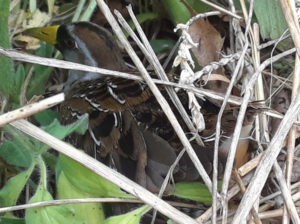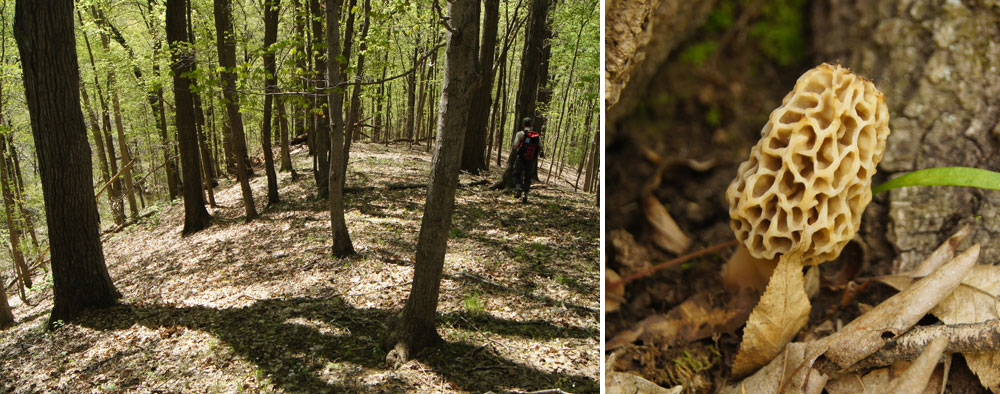CAS News & Notes for May 2019
by Eric Reuter
Upcoming Events
May birding is just too good to restrict to weekends, so early May has two weekday afternoon/evening field trips scheduled, one on Wednesday May 1 at Hinkson Creek and another on Tuesday May 7 at Rocky Fork Lakes Conservation Area.
The first weekend of May is the Audubon Society of Missouri (ASM) spring meeting, so there won’t be a local field trip. That Saturday, May 4, is Cornell Lab’s “Global Big Day”, so if you can’t make it to the ASM meeting, consider doing some birding of your own and submitting a list to join with tens of thousands of other birders around the world who will be contributing.
The annual Migratory Bird Count is on Saturday, May 11; see below for more details.
The May membership meeting will be a combined field trip (8:30-11:30) and potluck picnic (noon-3:00) on Saturday May 18, based at the Bonnie View Nature Sanctuary.
Saturday, May 25 will feature a field trip to Eagle Bluffs Conservation Area from 9:00 to noon.
And, don’t forget, the book discussion rescheduled from January will be taking place in June at the library. So as migration simmers down and the heat and humidity tick up, take some time to settle in with Welcome to Subirdia by John Marzluff.
Migratory Bird Count
For nearly three decades, CAS has organized birders to go out on the second Saturday of May and document the birds that are present and passing through Boone County. Boone County is divided into 13 regions, each with a leader and additional volunteers who are tasked with scouring the area to tally species and count individuals during the day. This is a fun way to see what’s going on in the landscape away from your routine birding spots at a time of year that is sure to turn up good sightings. For maps and details, see North American Migratory Count section of CAS’s Bird Count page. A temporary leader is needed for Area 6 (which includes Wild Haven), and opportunities exist for additional volunteers on teams, as well. If you’d like to take part but don’t already have a group, please contact Allison Vaughn.
Programs for 2019-2020 meetings: Input requested!
What topics or speakers would you like to see featured at CAS monthly meetings? What have been your favorite meetings in past years? What bird and/or ecosystem topics are you keen to know more about? What types of meetings really spark your interest: Presentations about bird research? Travel-based photography with great birding stories? Birding stories from around the world or from the local area? Book discussions? Workshops focusing on improving id skills by sight and or sound? Do you prefer traditional lectures or more interactive/hands-on-type events? Do you have ideas for out-of-town speakers? Do you like to know what other CAS members have been doing and seeing/hearing? The planning process for the coming year starts early, so please send any ideas and input to CAS Vice President Bill Mees.
Conservation Federation of Missouri Legislative Action Center
CAS recently became a member of the Conservation Federation of Missouri (CFM). One of CFM’s roles is to monitor proposed legislation relevant to conservation in the state. For example, CAS President John Besser recently used the CAS email list to share some important and timely state legislative issues that were compiled by CFM.
CFM has an online Legislative Action Center that lists relevant federal, state, and local issues; this tool provides an easy way to contact your state reps to share your opinions, whether or not you agree with CFM’s official position on the issue. You do have to create an account to enter the system. To sign up, go to the Conservation Federation of Missouri’s Legislative Action Center. Please consider using this tool to make your voice heard.
Board meeting
There was no board meeting in April, so there is no corresponding meeting summary. The next board meeting is tentatively scheduled for Wednesday, May 15 at 6:00 p.m. at the UU Church on Shepard Boulevard.
Schnabel Woods field trip recap
-by Joanna Reuter
On a gloriously sunny spring morning with redbuds in peak bloom and morel hunters on the prowl, Jim Gast led a field trip to Schnabel Woods, a University of Missouri property just off of the Katy Trail that is a designated Natural Area. The site hosts old-growth forest on the deep loess soils of the Missouri River hills and has been included in various university research projects. A brief attempt to find past research on the site didn’t turn up any surveys of the forest understory, which I’m curious about as (to my eyes) the area appears to be experiencing heavy deer pressure. One clue is the overall openness of the understory, combined with the prevalence of Pawpaw trees, a deer-resistant plant. The Pawpaws were in bloom, and the group saw Zebra Swallowtails, a butterfly species whose caterpillar feeds exclusively on pawpaw. Subsequent discussion pointed out that the adult butterflies have spring and summer forms based on the timing of pupation, with spring adults being smaller and lighter-colored. Another butterfly we saw, the Red Admiral, seems to be especially prevalent this spring. Various wildflowers were blooming, along with Flowering Dogwood and Bladdernut (I may have misidentified an additional plant; sorry, attendees). Oh, yes, we saw birds, too! Here’s the eBird list for the Katy Trail portion of the walk, here’s one for Schnabel Woods proper, and here’s a supplemental list for Schnabel Woods from a group of us who split off in pursuit of a mystery bird (turned out to be a Scarlet Tanager!) and climbed another ridge with lovely views across Eagle Bluffs Conservation Area.
Change in Chat editorship
-by Eric Reuter
I’ve been editing and producing the Chat since fall 2014, when I took over from Jan Mees. In that time, CAS’s communications have evolved to use a modern email system and a new website that streamlines the posting and sharing of news and information, thanks in large part to the board’s support and the hard work of Doug Miller (CAS’s long-serving webmaster). We’re still working to improve these systems based on experience and feedback; this summer we’ll be focusing on a new approach to present all upcoming CAS events in a single setting, similar to the Event Listings page trialed this spring.
I’m grateful to CAS for the opportunity to run the Chat for the past ~5 years, during which my goal has been to support CAS’s mission by working to share both information and inspiration. For me, birding has always been an entry point to a wider appreciation of interactions between earth science, ecology, and human history and I tried to convey some of that fascination in the newsletter. I intend to continue contributing to CAS by leading and participating in field trips and other educational events, but handing over the Chat to a new editor (whether Joanna Reuter or another volunteer) brings the promise of a fresh approach and perspective to CAS’s outreach. Thanks for reading.
Sightings
-by Joanna Reuter

Interesting sightings don’t have to involve unusual birds, though: A couple days prior to the Sora, I saw some fascinating Tufted Titmouse behavior. During a roughly 10 minute period, I twice saw one titmouse (assumed male) collect something edible and bring it to another titmouse (assumed female). The first item was unidentifiable (though it clearly got eaten); the second item looked like a sizeable caterpillar gathered from the top of an oak. I saw Mr. Titmouse wrestle with it before bringing it to Ms. Titmouse, who gobbled it up. If this were later in the season, I’d assume that this was a parent feeding a juvenile, but based on other observations of titmouse behavior here over the last few weeks, nesting and mating are just getting underway. Could this be an example of allofeeding, in which courtship includes the male demonstrating his parenting skills to the female (ability to collect food for future offspring)? Have you seen this behavior in titmice or other species?
Making birding more welcoming
-by Joanna & Eric Reuter
This essay on women in bird watching was first posted on MOBIRDS by Andy Reago and Chrissy McClarren, where it generated a range of reactions. The article focuses on womens’ experiences in a traditionally male-dominated field, but raises some issues that transcend gender. This is particularly relevant with regard to the intimidation or condescension that can be felt by new birders joining groups or field trips, or any situation where there is a real or perceived disparity in skill level or birding approach; we have direct personal experience with this dynamic. CAS certainly strives to be welcoming to all bird watchers and nature lovers with any level of experience, but there can be a delicate dance when a field trip participant desires more guidance while a field trip leader tries not to condescend. Our experience is that the desire to be helpful and inclusive is strong among CAS members and field trip leaders, but please speak up if you have ideas that can make events feel more welcoming. For example, on field trips we lead, we’d like to practice asking people up-front about their comfort level and interests, and emphasizing clearer descriptions and interpretations of bird observations, in order to do a better job of helping all attendees learn and have a good time.
Supporting CAS
Carrying out our mission through education, conservation, and outreach takes a wide variety of resources, from the valued time of dedicated volunteers to the financial support of members and donors. We welcome and appreciate all participants and supporters of our work through their generous donations of time, money, or other resources.
Submitting material to The Chat
The Chat is published online on the first of every month from September through May. Submissions are welcome, including photographs, stories, and suggestions for content. Starting in September, The Chat will have a new News Editor. Unless another volunteer steps forward, this will be Joanna Reuter. The next submission deadline is August 25th.

